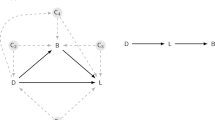Abstract
The Clinical Pathology Testing Working group (CPTWG) of the Japanese Pharmaceutical Manufacturers Association (JPMA) reviewed published literature on abnormal values in clinical pathology parameters in repeat-dose toxicity studies, and conducted a survey on the use of a quality control (QC) concept and statistical analysis methods.
Among the journals published between 1985 and 1992, ten were selected that listed many clinical pathology values from repeat-dose toxicity studies of pharmaceuticals. The frequency of ‘abnormal’ values which were statistically significant in clinical pathology examinations was checked. In all 787 papers, with a total of 15 030 sets of data, were examined to identify those abnormal values that were toxicologically meaningful and those that were not. Abnormal values that were toxicologically meaningful represented 30% and those that were not, 70%. The main criteria in judging abnormal values as ‘toxicologically meaningful’ included, but were not limited to, the following: pharmacological effects, histopathological changes, obvious changes in related pathology parameters, and dose dependency. Parameters with frequent ‘abnormal’ values were: haemoglobin (Hb); haematocrit (Ht); red blood cell count (RBC); white blood cell count (WBC); reticulocyte count; platelet count, for haematology; cholesterol; protein; alkaline phosphatase (ALP); urea nitrogen; phospholipid; triglyceride; GPT; potassium; GOT; sodium, for blood chemistry; and urine volume; urinary sodium; urinary potassium; specific gravity (sp. gr.), for urinalysis. These parameters, for each clinical pathology area, are regarded as ‘core’ parameters to be tested in all repeat-dose toxicity studies.
CPTWG also reviewed the toxicity studies (total 930) published in the main Japanese journals between 1985 and 1992. The percentage of ‘correlation’ of changes in clinical pathology and histopathological examinations was 49% for clinical chemistry tests, 45% for haematology, and 33% of urinalysis. In order to increase the correlation of histopathological and clinical chemistry findings, it would be necessary to have high organ, tissue and species specificities.
CPTWG surveyed the current maintenance status and quality control (QC) of equipment that is used for clinical pathology measurements. Maintenance of equipment used for haematology, clinical chemistry and urinalysis was provided in all the facilities surveyed. The scheduled maintenance of haematology equipment was provided by the manufacturers, at least twice a year, at most facilities. The scheduled maintenance by the inhouse technologist was conducted monthly to annually in more than half the facilities. A preoperational check was conducted by more than 90% of those facilities. The maintenance frequency of clinical chemistry equipment was similar. Methods of QC included the confirmation and verification of theoretical values to the actual values of control samples using the X-R control plot method (40% of the facilities) or the sample survey method (40% of the facilities). Most facilities used ‘± (2SD)’ or ‘within the minimum and the maximum ranges’ an acceptable criteria.
The last survey CPTWG conducted concerned statistical analysis methods used to evaluate clinical pathology values. When the measured clinical pathology parameters were expressed as mean values and variances, ‘Rank Test’ or ‘Welch Test’ was most frequently used in the case of unequal variance.
Similar content being viewed by others
References
Hall RL (1992) Clinical pathology for preclinical safety assessment: current global guideline. Toxicol Pathol 20:472–476
JMOHW (Ministry of Health and Welfare in Japan) (1989) Notification No. 24 of the Pharmaceutical Affairs Bureau, Guidelines for toxicity studies of drug
Matsuzawa T, Nomura M, Unno T (1993) Clinical pathology reference ranges of laboratory animals. J Vet Med Sci 55: 351–362
Waner T (1992) Current statistical approaches to clinical pathological data from toxicological studies. Toxicol Pathol 20:477–479
Weingand KW, Bloom J, Carakostas M et al. (1992) Clinical pathology testing recommendation for nonclinical toxicity and safety studies. Toxicol Pathol 20:539–543
Weingand KW (1993) International harmonization of clinical pathology testing for non-clinical toxicity and safety studies. Comp Haematol Int 3:164–167
Author information
Authors and Affiliations
Rights and permissions
About this article
Cite this article
Matsuzawa, T., Nomura, M., Yonezawa, H. et al. Selection of appropriate parameters, use of a quality control concept, and suitable statistical analyses for clinical pathology examination of animals in toxicity studies: Results of a current survey by the Japanese pharmaceutical manufacturers association. Comp Haematol Int 5, 196–200 (1995). https://doi.org/10.1007/BF00368044
Issue Date:
DOI: https://doi.org/10.1007/BF00368044




